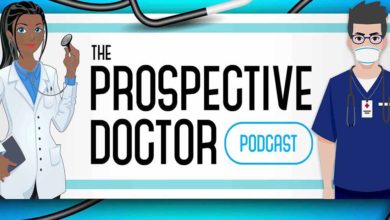Today Dr. Renee Marinelli is joined by Dr. Jeremy Polman from OnlineMedEd. He is spearheading the efforts at OnlineMedEd to include osteopathic medical education on their website. He’s here to talk about this work as well as COMLEX exams.
As an undergrad, Dr. Polman had no idea what the differences were between being a DO and being an MD. After doing some research, he realized that becoming a DO meant he would learn the exact same things as an MD plus osteopathic manipulative medicine (OMM).
When in DO medical school, Dr. Polman realized he really enjoyed learning osteopathic content. However, it was difficult because there wasn’t one great collection of knowledge; it was scattered throughout many different resources. His school offered a fellowship program that involved teaching first- and second-year students, so Dr. Polman made it his goal to make the curriculum easier to learn. He received overwhelmingly positive feedback.
[6:46] What an osteopathic medical student can expect in standardized tests.Osteopathy involves a bigger workload, but it can greatly help your patients and diagnostic capabilities. Exams often ask how you can treat something osteopathically, but also how you can use osteopathy to figure out the correct diagnosis.
[8:51] Affects on osteopathic students from the upcoming ACGME merger.As an osteopathic student, you must take the COMLEX in order to obtain a license and graduate. You can also take the USMLE, but it’s not a requirement. After that, it becomes a numbers game. If you want to get into a more competitive field, it may be a good idea to take both.
[11:29] Keeping your options open.Most of Dr. Polman’s classmates went into medical school thinking that they were going to take both exams. After going through a bunch of practice questions, people may realize that they are not ready to take them both. The merger makes it more competitive to get into the program you want, so it’s a case-by-case basis on what the best strategy is.
[13:10] COMLEX 1 test prep from OnlineMedEd.OnlineMedEd has topics broken down based on systems. There is free access to all the videos, while the premium services unlocks flash cards, practice questions, and more.
[16:00] COMLEX 2.There is a practical portion where you have to demonstrate OMM techniques. It’s a common source of dread for many students, perhaps because until now there has not been great study material. Dr. Polman says that OnlineMedEd made sure to create videos that go over specifically what you need to know and provides a dedicated platform for learning osteopathy.
[19:48] Final tips.Try to dedicate as much time to osteopathy as you can. You may not use physical treatments in osteopathy every day at the clinic, but it’s something you will use every day as a diagnostician.
